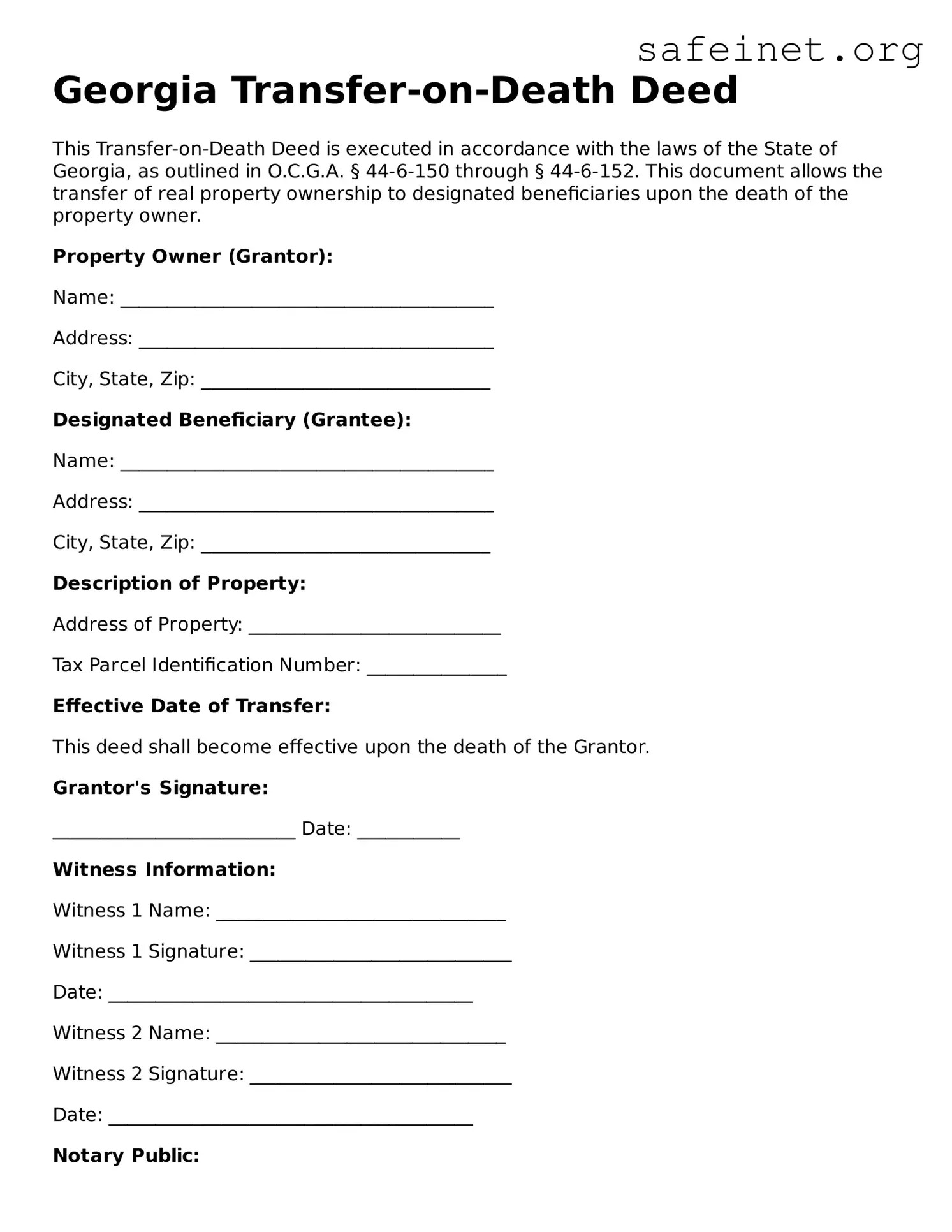Georgia Transfer-on-Death Deed
This Transfer-on-Death Deed is executed in accordance with the laws of the State of Georgia, as outlined in O.C.G.A. § 44-6-150 through § 44-6-152. This document allows the transfer of real property ownership to designated beneficiaries upon the death of the property owner.
Property Owner (Grantor):
Name: ________________________________________
Address: ______________________________________
City, State, Zip: _______________________________
Designated Beneficiary (Grantee):
Name: ________________________________________
Address: ______________________________________
City, State, Zip: _______________________________
Description of Property:
Address of Property: ___________________________
Tax Parcel Identification Number: _______________
Effective Date of Transfer:
This deed shall become effective upon the death of the Grantor.
Grantor's Signature:
__________________________ Date: ___________
Witness Information:
Witness 1 Name: _______________________________
Witness 1 Signature: ____________________________
Date: _______________________________________
Witness 2 Name: _______________________________
Witness 2 Signature: ____________________________
Date: _______________________________________
Notary Public:
State of Georgia, County of ____________
Before me, _______________________________ (Notary Public), appeared the Grantor, who is personally known to me or proven through identification, and acknowledged the execution of this deed.
Given under my hand and seal this ___ day of ____________, 20__.
Notary Public Signature: _______________________
My Commission Expires: ______________________
